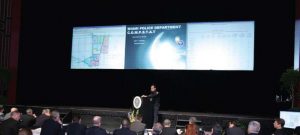CompStat is a “strategic control system” designed for the collection and feedback of information on crime and related quality of life issues.1 The CompStat process can be summarized in one simple statement: “Collect, analyze, and map crime data and other essential police performance measures on a regular basis, and hold police managers accountable for their performance as measured by these data.”2 This statement reflects the paradigm of modern policing: accountability at all levels of a police agency. Since the CompStat process was introduced by the New York City Police Department in 1994,3 it has been widely adopted4 and is partly responsible for contributing to significant improvements in the way many organizations control crime and conduct daily business. The process has recently been described as an “emerging police managerial paradigm”5 or “a new paradigm revolutionizing law enforcement management and practice”6 while others have called it “perhaps the single most important organizational/administrative innovation in policing during the latter half of the 20th century.”7
It is undeniable that the core management theories of CompStat, “directing and controlling,” have been demonstrated to be effective means for controlling crime. But the CompStat process also has an inherent opportunity for developing leaders and improving the leadership process. According to D. V. Day, leader development concentrates on developing, maintaining, or enhancing individual attributes like knowledge, skills, and abilities (KSAs).8 But Day distinguishes between leader development and leadership development, emphasizing that leadership development focuses on the nature of the leader-follower relationship and not just the KSAs of the leader. In this model, the most important leader ability is interpersonal competence in fostering a spirit of cooperation in problem solving and embracing, creating, and implementing change. The leadership aspect of the Comp-Stat process must instill in people a sense of willingness to accomplish the goals of the organization using initiative and innovation. “The chief executive should create a thirst for leadership in an environment in which all officers feel they can attain and exercise leadership capacities, not simply attain hierarchical leadership posts,” as an IACP report on leadership put it. “This includes imparting leadership knowledge and understanding of the organizational culture.”9
